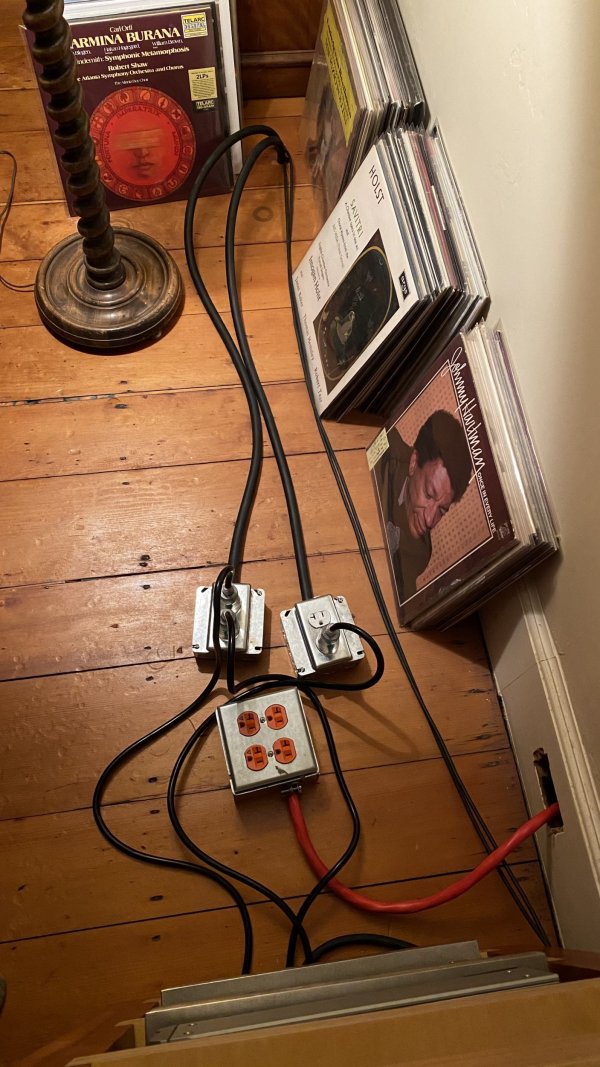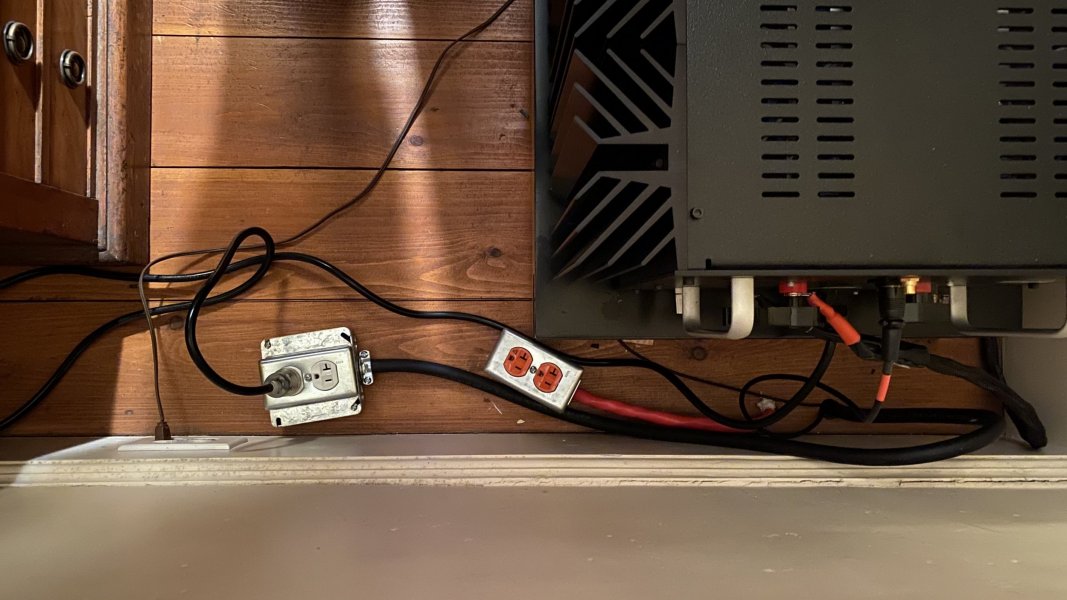I have been experimenting with power delivery from my panel to my components for about a year now. The first step was comparing various power cords. I finally settled on NOS Ching Cheng cords I got from ddk. The next step compared the Furutech IEC connectors on the ends of JPS Labs In Wall wiring from the panel to industrial grade isolated ground Hubbell receptacles. To do this comparison, I simply made up some DIY receptacle boxes connected to the JPS Labs wiring.
This was followed in step 3 by comparing standard industrial in wall wires to the JPS Labs wires. I made up the outlet boxes on long runs of industrial wires and finally got an electrician to do the installation at the panel. I started the wire comparisons yesterday when a friend was over coincidentally. He heard the same differences I did, though he described them using different language. I finished the comparisons by listening all afternoon and evening, but the contrast was clear and consistent from the first LP I put on.
In summary, these are the power delivery steps I have taken so far:
1. Replaced five (5) audiophile power cords with NOS Ching Cheng cords from ddk
2. Replaced Furutech audiophile IEC connectors with industrial grade Hubbell receptacles
3. Replaced JPS Labs audiophile In Wall wiring with industrial grade wiring
The electrician installed new breakers for the four new dedicated 30 amp circuits. The JPS Labs wiring was on three circuits. Now each amp is on its own circuit, the turntable motor is separate and the preamp and phono stage share a circuit. Each circuit is on the same phase in the panel and opposite the refrigerator and other appliances. I may replace the 20 amp breakers with 30 amp breakers.
My next step is to clean up the installation and actually mount the receptacles in the baseboards on the walls in the final locations and then to try to improve the grounding scheme with new rods into the damp soil under my basement and possibly insert a sub panel before the main panel dedicated to the audio circuits, but I don't know if that would meet the local codes.
Each of the three steps so far has improved the sound quality incrementally. In a general sense, I would describe it as simply sounding more natural, less hifi, more emotional, less analytical. For those who want a more specific description, this is what my friend and I heard:
1. an overall more balanced sound
2. specific sonic attributes draw less attention to themselves; individual frequencies are less pronounced
3. the bass frequencies sound cleaner and more extended, more nuanced, more varied
4. there is greater differentiation between recordings
5. increased clarity
6. more evident recording venue cues
7. less tizzy/white, more tonally saturated high frequencies
8. singers sound more human, more present, more dimensional
9. hollow instruments sound more hollow, less solid
10. overall impression is less about system, more about music, it draws you in more
Like others here, I have come to learn that power delivery is the foundation of a natural sounding system. I lived very happily with what was recommended by my dealer years ago: JPS Labs In Wall wiring, Furutech IEC connectors, audiophile power cords into audiophile distribution boxes, EquiTech balanced boxes. I have learned from direct experimentation in my own system that this simpler, more basic, much less expensive approach has yielded superior results, at least for me in this system. I have the impression that my components are now sounding more as they should, (but this is just a hunch).
Here are some photos of the DIY outlet boxes and wiring lying around the floor for easy and quick A/B comparisons in this latest round of wiring options. Top photo shows turntable motor circuit and the preamp/phono circuit. Bottom photo is of one amp channel.
Out with the old, in with the new.
View attachment 75289
View attachment 75290



